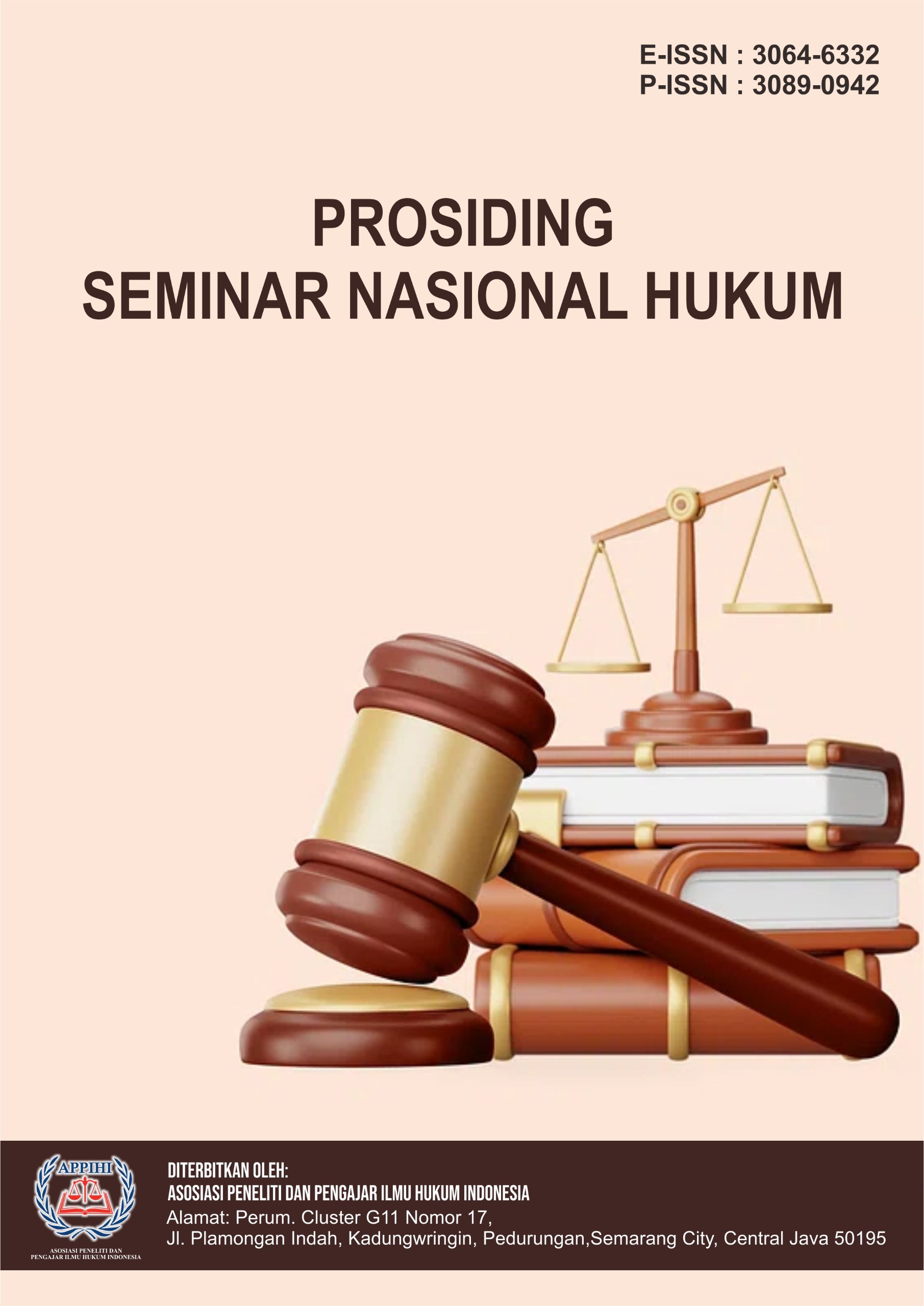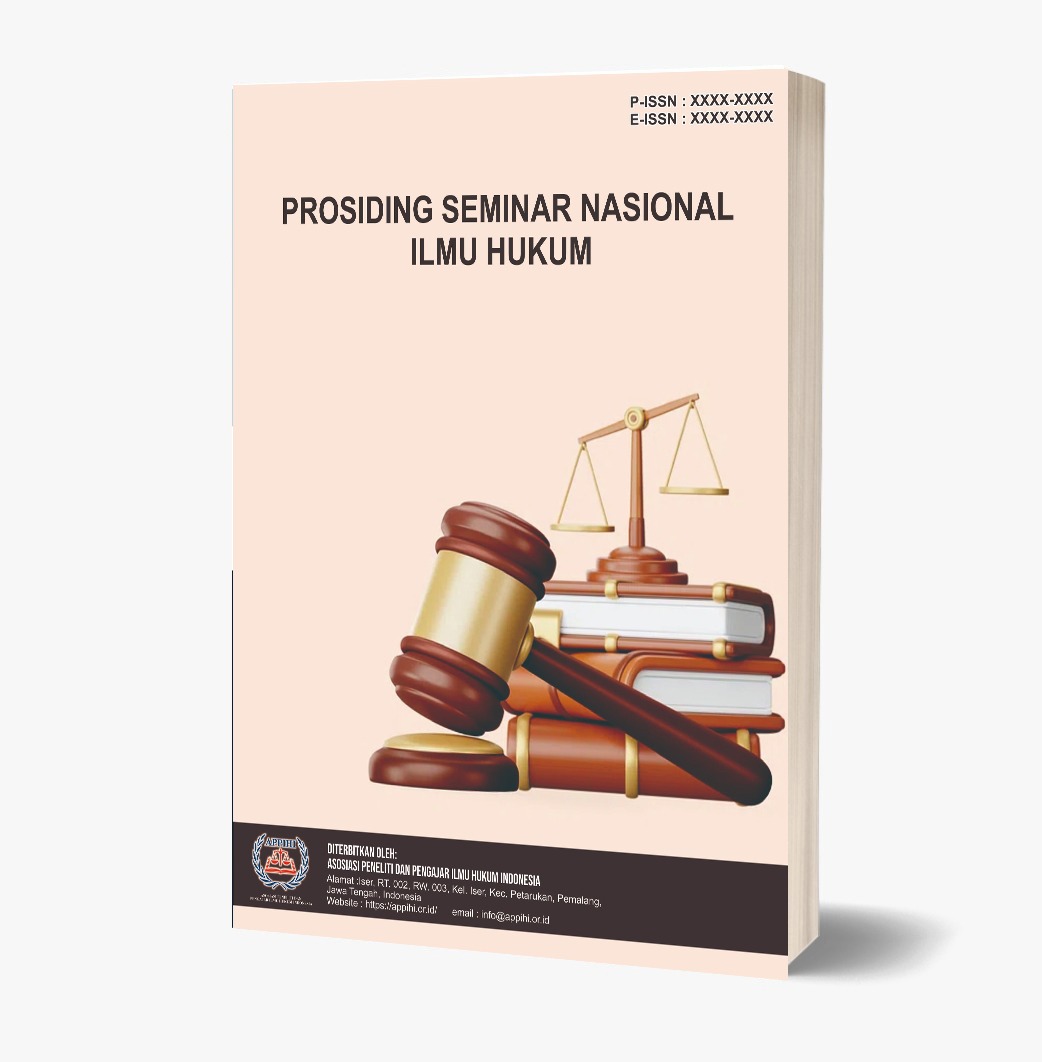Masa Depan Penegakan Hukum Indonesia: Sistem Peradilan Pidana Berbasis Kecerdasan Buatan (AI)
DOI:
https://doi.org/10.62383/prosemnashuk.v1i1.19Keywords:
artificial intelligence, judicial system, law enforcementAbstract
The era of technological disruption has brought about significant changes across various sectors, including the legal sector. One of the most prominent developments is the use of artificial intelligence (AI) in the judicial system. AI can be utilized for a wide range of tasks, from analyzing legal documents to predicting case outcomes, and even acting as a legal assistant. This study employed a qualitative approach by analyzing various sources such as journals, documents, and relevant research findings. The results of the study indicate that while AI offers numerous benefits, its application in the judiciary also faces several challenges. One of the primary challenges is the issue of data bias. The performance of AI heavily relies on the quality of the data used to train it. If the data contains biases, the resulting AI will also be biased. Additionally, concerns about privacy and data security are significant issues that need to be addressed.
Downloads
References
Artikel Prosiding
Ashok, A., Johnson, M., S, R., George, S. M., & Rajagopal, S. (2022). Benefits and challenges of artificial intelligence in healthcare. International Journal of Engineering Technology and Management Sciences. https://doi.org/10.46647/ijetms.2022.v06i05.097
Ashri, R. (2020). What is AI? https://doi.org/10.1007/978-1-4842-5476-9_2
Chakrabarti, D., Patodia, N., Bhattacharya, U., Mitra, I., Roy, S., Mandi, J., Roy, N., & Nandy, P. (2018, October 1). Use of artificial intelligence to analyse risk in legal documents for a better decision support. In IEEE Region 10 Conference. https://doi.org/10.1109/TENCON.2018.8650382
Chen, B. M., & Li, Z. (2020). How will technology change the face of Chinese justice? Columbia Journal of Asian Law. https://doi.org/10.7916/CJAL.V34I1.7484
Chen, C. L. P. (2015, May 21). Deep learning for pattern learning and recognition. In Symposium on Applied Computational Intelligence and Informatics. https://doi.org/10.1109/SACI.2015.7208200
Egbert, S., & Krasmann, S. (2020). Predictive policing: Not yet, but soon preemptive? Policing & Society. https://doi.org/10.1080/10439463.2019.1611821
El Naqa, I., El Naqa, I., & Murphy, M. J. (2015). What is machine learning? https://doi.org/10.1007/978-3-319-18305-3_1
Gourraud, P.-A., Simon, F., & Simon, F. (2020). Differences between Europe and the United States on AI/digital policy: Comment response to roundtable discussion on AI. https://doi.org/10.1177/2470289720907103
Kumar, K. K., Kasiviswanadham, Y., Indira, D. V. S. N. V., Palesetti, P. P., & Bhargavi, C. V. (2021). Criminal face identification system using deep learning algorithm multi-task cascade neural network (MTCNN). Materials Today: Proceedings. https://doi.org/10.1016/J.MATPR.2021.06.373
LeCun, Y., Bengio, Y., & Hinton, G. E. (2015). Deep learning. Nature. https://doi.org/10.1038/NATURE14539
Lee, C. S., Du, J., & Guerzhoy, M. (2020, June 15). Auditing the COMPAS recidivism risk assessment tool: Predictive modelling and algorithmic fairness in CS1. In Integrating Technology into Computer Science Education. https://doi.org/10.1145/3341525.3393998
Liu, J. (2015). Data processing method, server, and system.
Lum, K. (2017). Limitations of mitigating judicial bias with machine learning. Nature Human Behaviour. https://doi.org/10.1038/S41562-017-0141
Michalopoulos, D. P., Jacob, J., & Coviello, A. (2019, June 17). AI-enabled litigation evaluation: Data-driven empowerment for legal decision makers. In International Conference on Artificial Intelligence and Law. https://doi.org/10.1145/3322640.3326708
Mishra, C., & Gupta, D. L. (2016). Deep machine learning and neural networks: An overview. International Journal of Hybrid Information Technology. https://doi.org/10.14257/IJHIT.2016.9.11.34
O’Regan, G. (2018). Introduction to algorithms. https://doi.org/10.1007/978-3-319-75844-2_5
Sartor, G. (2009). Judicial applications of artificial intelligence. https://doi.org/10.1007/978-94-015-9010-5
Wheeler, A. P., & Steenbeek, W. (2020). Mapping the risk terrain for crime using machine learning. https://doi.org/10.21428/CB6AB371.9D5F4A40
Zhang, L., Pan, Y., Wu, X., & Skibniewski, M. J. (2021). Introduction to artificial intelligence. https://doi.org/10.1007/978-981-16-2842-9_1
Working Paper
Hilyerd, W. A. (2005). Using the law library: A guide for educators part IV: Secondary sources to the rescue. The Journal of Law of Education.
Kröse, B., & van der Smagt, P. (1996). An introduction to neural networks.
Shivale, N. (2018). Era of artificial intelligence. Abhinav-International Monthly Refereed Journal of Research in Management & Technology.
Tilton, S. K., Robinson, W. C., & Darty, M. (2010). Automated ticket processing system and method.
Buku Teks
K. Bertens. (1999). Sejarah filsafat Yunani. Yogyakarta: Kanisius.
Margareth Poloma. (2004). Sosiologi kontemporer. Jakarta: PT. Raja Grafindo Persada.
Suparno. (1997). Filsafat konstruktivisme dalam pendidikan. Yogyakarta: Kanisius.







